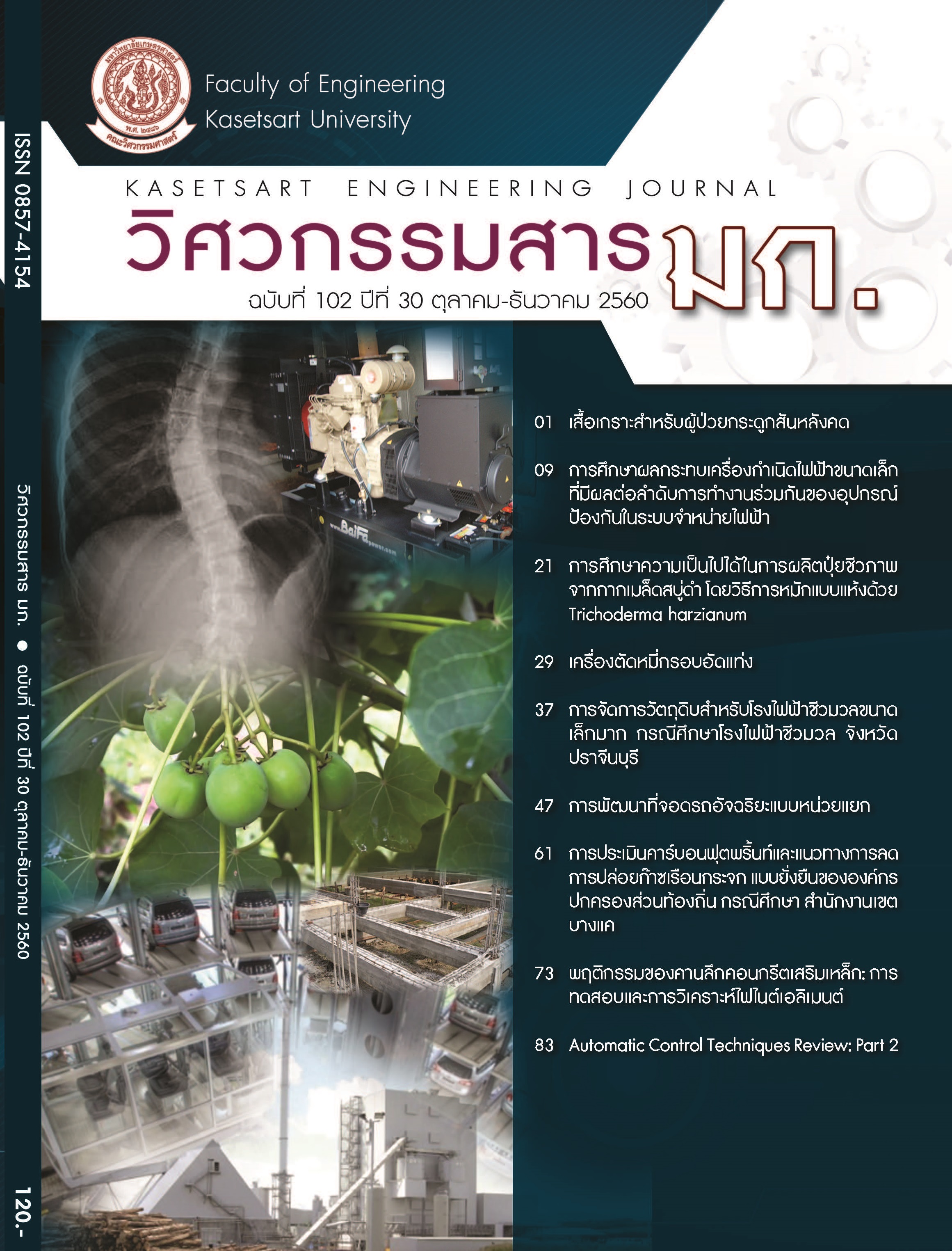Scoliosis Brace
Keywords:
scoliosis; scoliosis brace; 3D scan; CNC machiningAbstract
One of the problems of making the scoliosis braces is the plaster casting process. The patients need to hold the bodies still for a certain amount of time until the plaster casts set which usually take quite some time. Moreover, molds finished by hand can most likely lead to some geometric errors that cause pressure on the patient bone and body upon wearing. Modifications are most likely to be occurred. Manufacturing, thus, may take weeks. This research aims to develop a standard process to produce a scoliosis brace that fits the patient body using Reverse Engineering technique. The process can be described as follow. We start collecting data from the volunteer instead of the real patient by scanning on volunteer body using a 3D structured light scanner. After that, the 3D patches are then merged into a 3D negative mold which is used to make size and shape of the brace that fits the volunteer. The negative mold is then adjusted before sending to 4-axis CNC machining. The results from this research show that the lead time for this brace is reduced to 3 days compared to 14 days in the conventional process. The scoliosis brace made from this technique looks good and fits the volunteer body. Irritations and pains caused by daily usage can be gotten rid of. Volunteer is willing to wear the brace for longer period of time which in turn help the real patients to follow treatment schedule designed by the doctor.


